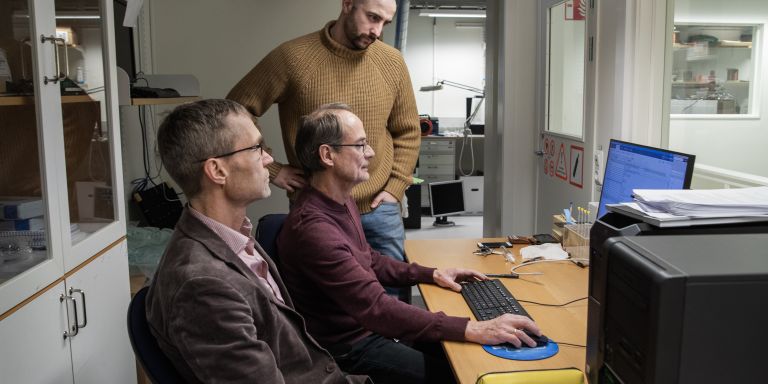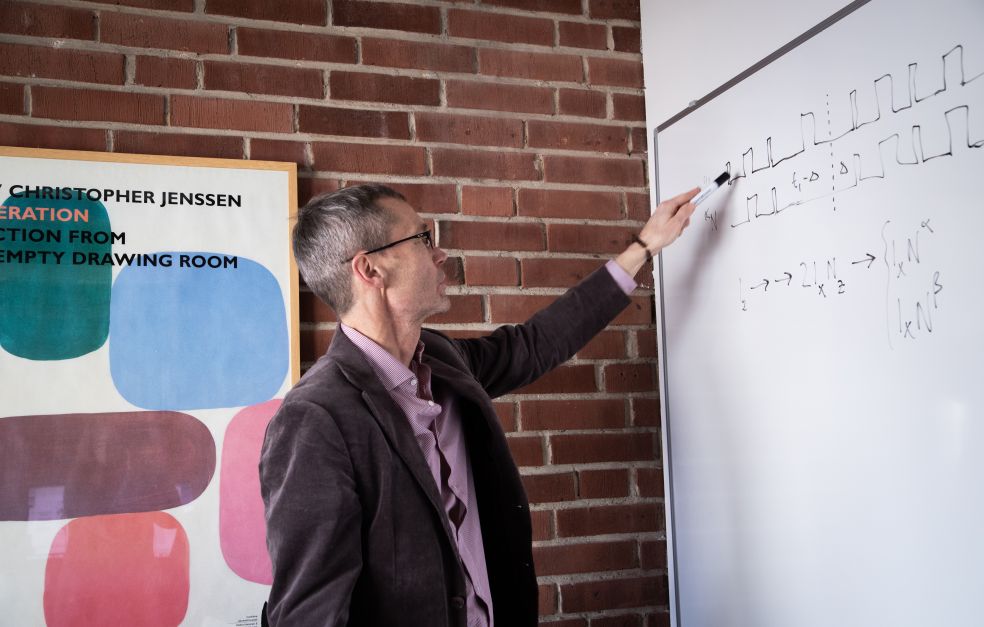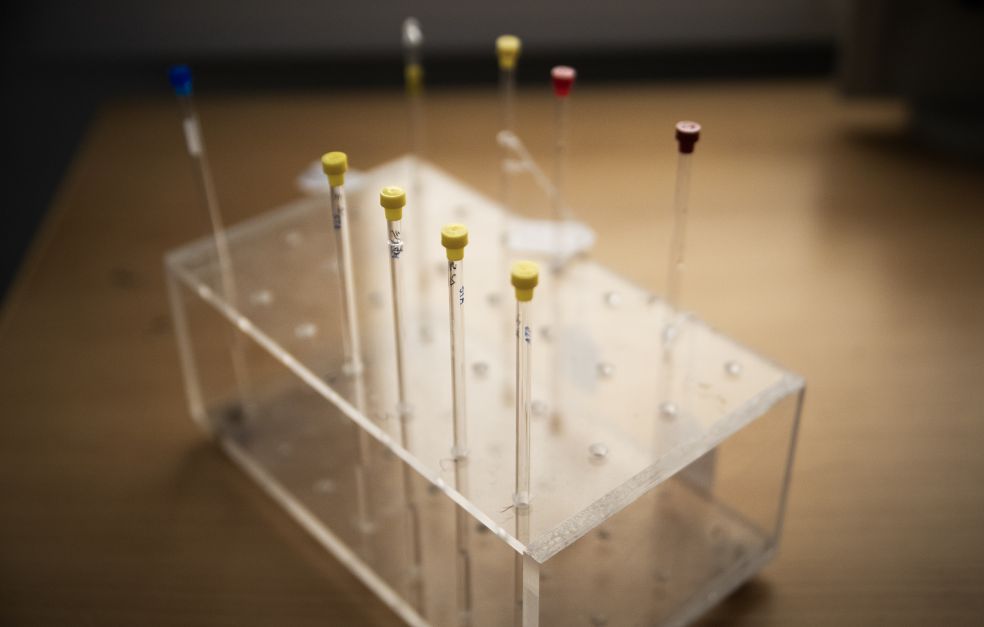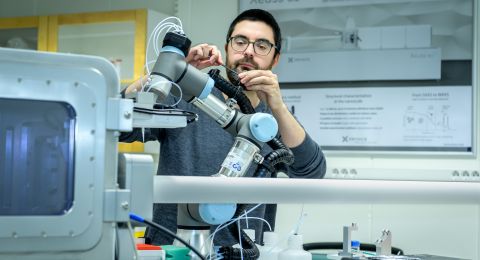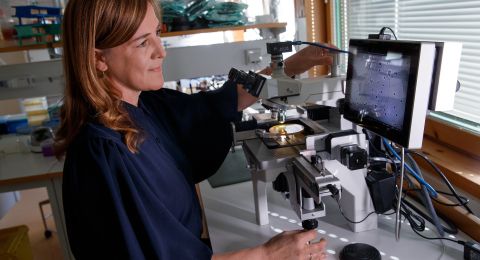
Project Grant 2022
Decoding dynamics and energetics of allosteric signaling
Principal investigator:
Professor Mikael Akke
Co-investigators:
Lund University
Sara Linse
Stockholm University
Erik Lindahl
Institution:
Lund University
Grant in SEK:
SEK 36.5 million over five years
Proteins are the body’s minute molecular machines that ensure our vital processes work properly. Mikael Akke, Professor of Biophysical Chemistry at Lund University, has devoted much of his research career to gaining a better understanding of these fascinating and essential building blocks in our body.
Many unanswered questions still remain about how proteins work, and allosteric signaling is one of the key processes about which vital knowledge is lacking. Allostery occurs when a molecule binds to a part of the protein, thereby affecting its ability to bind other molecules to another part of the protein. Akke describes the process as a form of communication between different parts of the protein.
“Allostery involves the sending of signals – messages if you will – from one part of the protein to another. This triggers key bodily processes, such as the manufacture of proteins from different genes,” he explains.
Studying strength and signal pathways
In a new project, funded by Knut and Alice Wallenberg Foundation, Akke and his team are attempting to fill in the gaps in our knowledge about allosteric signaling.
“Allostery has been the focal point for much of the biological research conducted since the 1960s. I’m not ashamed to say that we researchers still don’t understand the process properly. That’s why it’s a great privilege to carry out this project, so we can approach the problems from a new angle, and hopefully solve the mystery of how allosteric signaling works at a fundamental level,” he says.
To gain a better understanding of the allosteric process the research team is using a method that combines experiments with computer simulations. This enables them to monitor signal pathways more closely. The aim is to reveal how a signal is sent and spreads through the protein, which parts of the protein are involved in the process, and how the strength of the signal relates to the signal pathway.
“There’s very little experimental data establishing allosteric signal pathways. By combining experiments with computations, we are creating many new possibilities. As part of the project, we’ll be relating the dynamics of the signal pathway to the energy, i.e. the strength of the allosteric effect. No one has ever researched this specific question – how the signal pathway relates to the signal strength. If the project succeeds, we will gain a more coherent picture of the way allostery works,” Akke explains.
Aiding the design of new drugs
More knowledge about allostery will increase our understanding of the molecular basis of certain diseases, and Akke hopes the project will ultimately help in the development of allosteric drugs. These drugs have clear advantages over many other therapies, and may be of importance for numerous diseases, such as cancer, as well as neurological and psychiatric disorders.
“Many traditional medicines block the part of the protein’s activity relating to the disease. This may effectively counter the disease, but these drugs also shut down a function needed so the body can work properly. Allosteric drugs can instead adjust protein activity upwards or downwards without shutting it down completely. If we can crack the allosteric code, it will pave the way for more efficient design of these drugs. We hope it will be possible to tailor future allosteric drugs to the individual so that more of the body’s normal functions endure and side-effects are minimized,” he says.
Creating greater understanding – and new ideas
The researchers are taking on an extensive and complex project. Akke stresses that it would not have been possible without the collaboration between leading experts that the grant has funded.
“The project brings together senior researchers who are highly skilled in their field, and their expertise dovetails very well indeed. We’re also able to recruit doctoral students and postdocs to the project, and we’ll have access to very high-quality equipment and instruments. Given these advantages, I believe we have every chance of driving the field forward and adding to our understanding of how allosteric signaling works. As with all research, it’s also important that our findings lead to new ideas and topics. So one of our key aims is that our findings should have a major impact and be followed up by researchers in other parts of the world,” Akke concludes.
Text Ulrika Ernström
Translation Maxwell Arding
Photo Åsa Wallin
